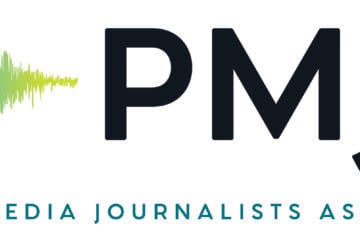Learning to listen and acting on what you hear builds foundation for engagement
This commentary is the second in a series adapted from the Community Engagement Guidebook, produced by the Nine Network with funding from CPB.
As public stations adopt an ethos of engagement, an essential first step is a process of “radical listening” that will define your work as you develop deeper structured connections to your local community.
The key is to make listening an innate habit that is continuous and intentional. The art of listening requires consistent practice.
Listening is the bedrock for engagement. It gives your station the who, what, when, why and where of your efforts while simultaneously building awareness and understanding of the needs, interests, history and priorities of your community. To learn what’s important to your community, you need to listen.
Community conversations are the primary tool for consistent listening. These are simply organized and uniform ways to ensure you have your finger on the pulse of your community. The Community Engagement Guidebook has tools and templates to help facilitate effective community conversations. In this commentary, we explore the whys and the hows of listening.

Jason Winkeler
Two participants talk during a community conversation that Nine Network of St. Louis co-hosted with the Missouri History Museum.
Ongoing listening leads to better-connected and -informed community efforts, improves station relevancy and enhances your value in the community. Every meaningful engagement effort — no matter how big or small — is made better by listening.
The first installment of this series discussed engagement as a process that builds ongoing, permanent relationships for the purpose of applying a collective vision for the benefit of a community. It is important to understand that the information provided during this listening process is a starting point. Your community engagement efforts will continually evolve.
Authentic engagement
Not all listening is created equal. Effective outreach is often confused with community engagement. So what is the difference? Authentic engagement is not a means to an end, but an ongoing practice that is flexible and guided by a set of principles. This learning is best articulated by the Harwood Institute for Public Innovation’s five principles of engagement:
- Pursue authentic engagement, not public input.
- Engage people as citizens, not consumers.
- Discover voices, not simply demographics.
- Seek common ground, not consensus.
- Provide knowledge, not more information.
When effectively practiced, these principles help us better understand and prioritize the topics and issues that drive communities forward. These principles should be applied regardless of the community priority you’re trying to address or the outcome you’re striving to achieve. Authentic engagement enables the culture of learning that’s needed for public media to remain relevant, and allows for durable benefits to your community and station.
Practice listening
The best way to build engagement capacity is to consistently practice it.
Listening is beneficial because it often gives you direction on how to:
- Use community-identified issues to support funding strategies, proposals and prospects.
- Capture community testimonials for inclusion in development materials.
- Connect community-identified issues to content creation.
- Find fresh voices and subject-matter experts to bring their stories and insights to your content.
- Leverage new distribution pathways for sharing your content, including through community partners and those who participate in community conversations.
- Discover new language to describe your work, emphasizing the role and value of public media.
- Identify new partners that can help share your story.
It’s most effective when this practice isn’t confined to a particular department. Commitment and support from leadership are essential for a station to approach listening as an organization-wide imperative.
By involving cross-functional teams in the community conversations, the understanding that develops about what’s important to the community will be spread across your station.
We recommend that you establish a group of six to eight staff from across the organization to participate in this process.
1. Start by observing. Go on a listening tour across your region. Identify a few groups that are already meeting across your community, and inquire about participating as an observer. Be sure each conversation you observe has a different topic, location and facilitator. Public libraries, higher education institutions and churches are good places to look for groups that are addressing public-facing issues.

Amy Shaw
Donors from Nine Network’s planned giving program participated in a community conversation.
The goal here is to learn from different types of conversations facilitated by others. In each case note what went well and where you observed challenges. Think about the different techniques and formats used by the facilitators to encourage conversation and the different issues being addressed. How were the conversations similar and how did they vary?
2. Join in. Build on what you learned from your observations by actively participating in a variety of conversations. Continue to note what went well and what didn’t. Identify which conversations gave you the best experience and why. You’ll want to replicate these practices for the conversations that you facilitate.
3. Share what you learn and create a plan. Gather the cross-functional team to discuss what you’ve learned with your station colleagues. Plan how you might use community conversations to inform your station’s work, and develop a strategy to host up to four conversations. The group decides details such as where to host the conversations and whom to invite. For these first conversations, stick to a broad approach of exploring community aspirations.
Some tips for hosting community conversations:
- Communicate the purpose of the community conversation to attendees early and often, including in the invitation.
- Provide assistance for targeted audiences (for example, you may need a translator or bilingual materials).
- Deploy a recruitment strategy and think about partnering with other organizations that can attract new participants to community conversations.
- Invite other staff to observe the community conversations.
- Determine staff roles in advance; a facilitator and a note-taker are required roles.
- Keep a record of all community conversation participants and engage them in ongoing station communication.
- Further engage participants: Share brief notes from the conversation, offer them ways to connect with the station, and share ways their information informed your work, if applicable.
- Gather feedback from participants.
4. Host a community conversation. Use the Harwood Institute of Public Innovation’s Ground Rules and Discussion Guide, which is included in the guidebook’s appendix, to practice and implement your community conversations.

Galmiche
Think of these gatherings as “kitchen table conversations.” Make them comfortable and informal, and provide snacks. The number of participants will vary, but we’ve found that a group of 10 to 15 is the optimal size to ensure that everyone has a chance to engage. You’re looking for themes that emerge in the conversations — so include a number of station colleagues in each conversation. It’s important to discuss takeaways from each event with these colleagues, but be sure to have someone take notes during the conversation.
Share what you learn and determine next steps. The Community Conversation Info Sheet, also included in the guidebook, will help you synthesize what you learned and find commonalities across multiple community conversations. Recurring and relevant information will be the most useful. Review the Info Sheet with colleagues.
- What did we learn about our community’s aspirations? What were the commonalities and differences across conversations?
- What were the most common “top priorities” identified across all of the conversations?
- Which “top priority” is mentioned most frequently?
- How does this particular “top priority” affect individuals in the community and the broader community? Discuss the associated challenges and solutions you heard.
- How did the conversations differ by audience demographic, location, etc.?
- What did we learn that we might incorporate into our existing work?
- What did we learn that might be useful for future work?
- What are our next steps?

Shaw
It’s also good to share what themes emerged with the conversation participants. People like to hear about what you learned, and if you use this information in your work, be sure to share that as well. Consistent feedback loops are important to build trust.
6. Lather, rinse and repeat! Community conversations should be ongoing. The practice of listening doesn’t just happen once. It’s important to continue to deepen your understanding of what’s important to your community. Ongoing conversations help provide consistency without creating the expectation that you’ll do a new project each time. You’ll find that community members appreciate your desire to listen and understand their aspirations.
Community engagement is an ethos. Listening is a practice. Your engagement efforts will evolve as you deploy different tactics, tools and resources to meet the needs of your community.
Nine Network CEO Jack Galmiche and Senior VP Amy Shaw developed groundbreaking engagement strategies for public media through their leadership of the St. Louis station and through the national American Graduate initiative. They wish to acknowledge the contributions of former colleagues Shelly Williams and Courtney Dowdall in producing the guidebook from which this commentary was adapted and CPB’s role in supporting the publication. Download the guidebook and for more information, contact Amy Shaw.






